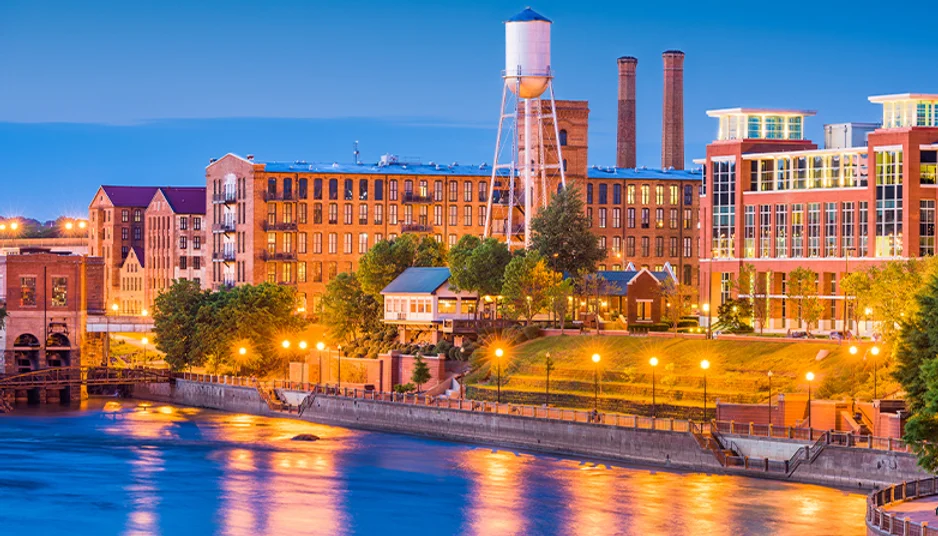
City Mills Hotel in Columbus is a rehabbed 19th century grist mill built with the help of a state tax credit.
ATLANTA – Georgia low-income housing and historic rehabilitation tax credits are critical for the financial and social wellbeing of residents across the state, a series of witnesses testified at a legislative hearing Wednesday in Columbus.
Builders, financial experts, and nonprofit executives defended the two types of tax credits before the Joint Tax Credit Review Panel, a committee of state representatives and senators formed this year to examine the various tax incentives Georgia offers and determine whether the state is getting a healthy return on the lost revenue.
Since its first meeting in June, the panel has heard representatives of Georgia manufacturers and the film industry advocate on behalf of their respective tax credits as well as officials from public policy organizations discuss the pros and cons of the tax incentives the state uses to attract certain types of businesses that might not otherwise set up shop in Georgia.
The Georgia Department of Community Affairs used the state’s low-income housing tax credit to help finance 32,000 affordable housing units between 2019 and 2022, Philip Gilman, the agency’s deputy commissioner for housing and development, told the committee Wednesday.
While the federal government funds one-third of the cost of those units and banks provide another one-third, the state’s one-third match is vital, said Chris Hite, a board member of the Georgia Affordable Housing Coalition and president of Sugar Creek Capital.
“You take away our money and none of these deals work,” Hite said. “But for the state credit, nothing gets built.”
Cathy Williams, president and CEO of the nonprofit NeighborWorks Columbus, said the benefits of helping low-income Georgians obtain affordable housing go beyond bricks and mortar.
“When you’re housing-vulnerable, it creates toxic stress,” she said. “It leads to crime. It leads to truancy. It is in our social interest to make sure our people are cared for.”
Historic preservation advocates said offering tax credits to help finance the rehabilitation of historic properties also provides broader benefits to communities across Georgia.
The state offers two types of historic rehabilitation tax credits: a credit of up to $5 million for individual income-producing commercial projects and a smaller credit capped at $100,000 for each residential project.
Ben Sutton, director of preservation for the Georgia Trust for Historic Preservation, said something as seemingly modest as restoring one historic home in a blighted area can increase property values throughout an entire neighborhood.
“The catalytic effect of these projects cannot be understated,” he said.
Sutton said income-producing commercial projects financed with the help of the historic rehabilitation tax credit have sparked downtown revitalization in cities and towns across the state, including Bainbridge, Brunswick, Columbus, Macon, and Savannah.
“It is the driver for letting these secondary and tertiary towns in Georgia – which is anything other than Atlanta – develop themselves,” said Pace Halter, president and chief operating officer of W.C. Bradley Real Estate in downtown Columbus.
State Sen. Chuck Hufstetler, R-Rome, said the cost of the state’s low-income housing tax credit is running well above the rate of inflation.
“It seems like a pretty generous program,” he said. “Is it not overly generous?”
Gilman said it’s more expensive to build affordable houses with the housing tax credit than through the market because the program requires that the houses be kept in good condition for 15 to 30 years.
“There’s a larger investment upfront so we don’t have an eyesore 15 to 30 years later,” he said.
The review panel is due to recommend any potential changes to the state’s tax incentives in time for the 2024 General Assembly session starting in January.
